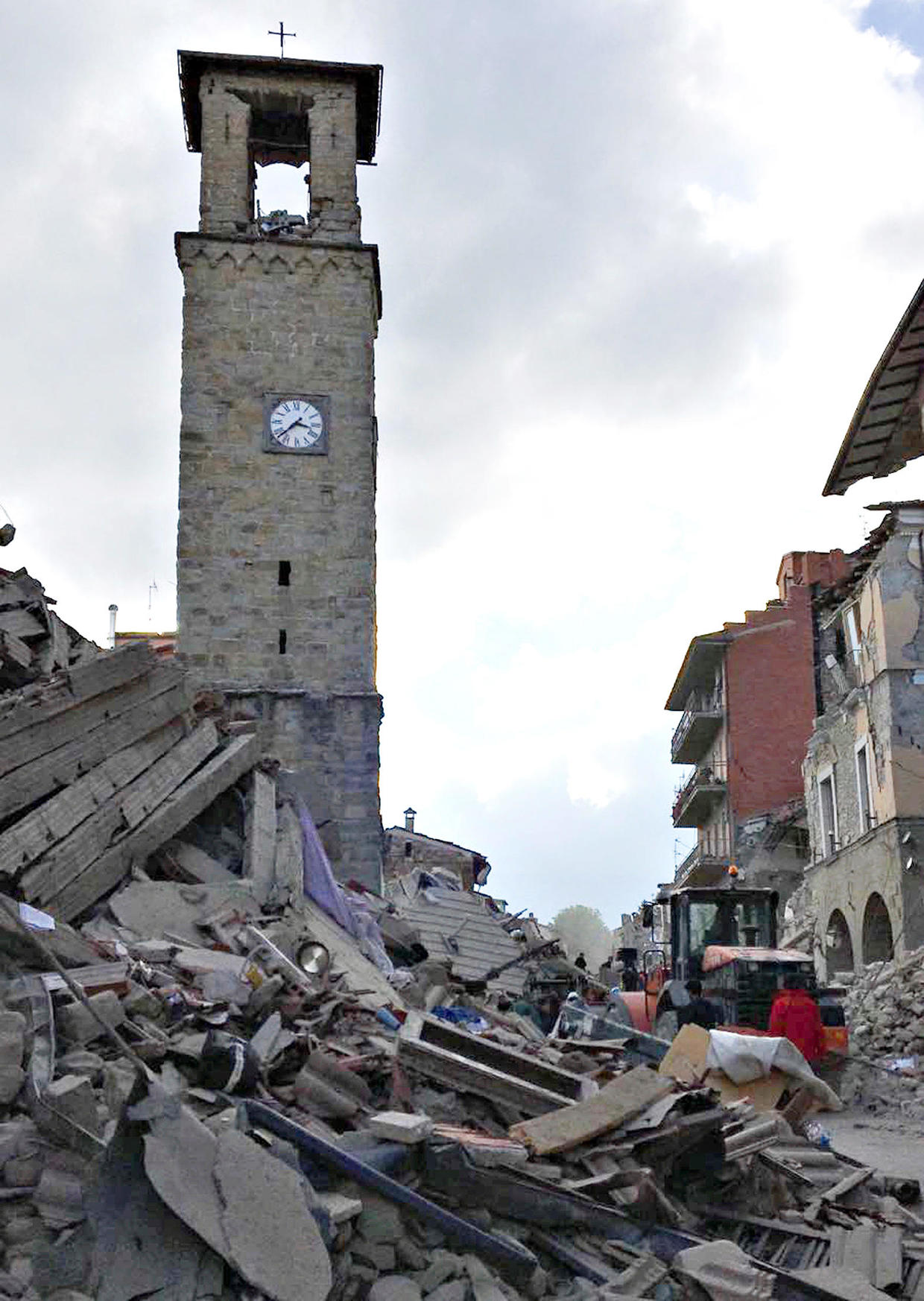
In August of 2016, a powerful 6.2-magnitude earthquake, accompanied by over 45,000 aftershocks and four lesser earthquakes, devastated several communities in central Italy. Like most earthquakes that result in high death tolls, it struck in early morning when most residents were still asleep. This quake took over 300 lives, injured close to 400 people and left thousands homeless. The cost of the damage was estimated at over €23 billion. The centuries old, picturesque hill town of Pescara del Tronto, with around 100 fulltime residents just northeast of Rome, was one of those communities hit hard. During the Middle Ages its location on the steep slope provided a fortified refuge from bands of outlaws. However, the same construction and hillside location proved to be its undoing in 2016. Surprisingly, the clock tower shown here, built in the 13th century, was still upright after all the shaking. In fact, this particular tower has evaded destruction due to earthquakes twice in the past 800 years.
Although the tower’s stability is partially due to quality construction, a perhaps more interesting contributing factor was the tower’s resonance. It is not uncommon for well-built ancient towers to survive earthquakes if their resonance reacts favorably to the earthquake’s frequency. The earthquake generates seismic waves, similar to an ocean wave with peaks and troughs. The frequency of the wave is determined by the depth and strength of the quake as well as the type of soils it is passing through. Buildings sway back and forth based on their geometry, distribution of weight and stiffness. It is the interaction of these two factors that impact a structure’s ability to withstand the stresses of an earthquake. To greatly simplify matters, when the frequency of an earthquake resonates with the frequency of a building, the structure will suffer its greatest damage. It seems this clock tower survived not only because of its quality construction, but due to its shape, size and weight.
